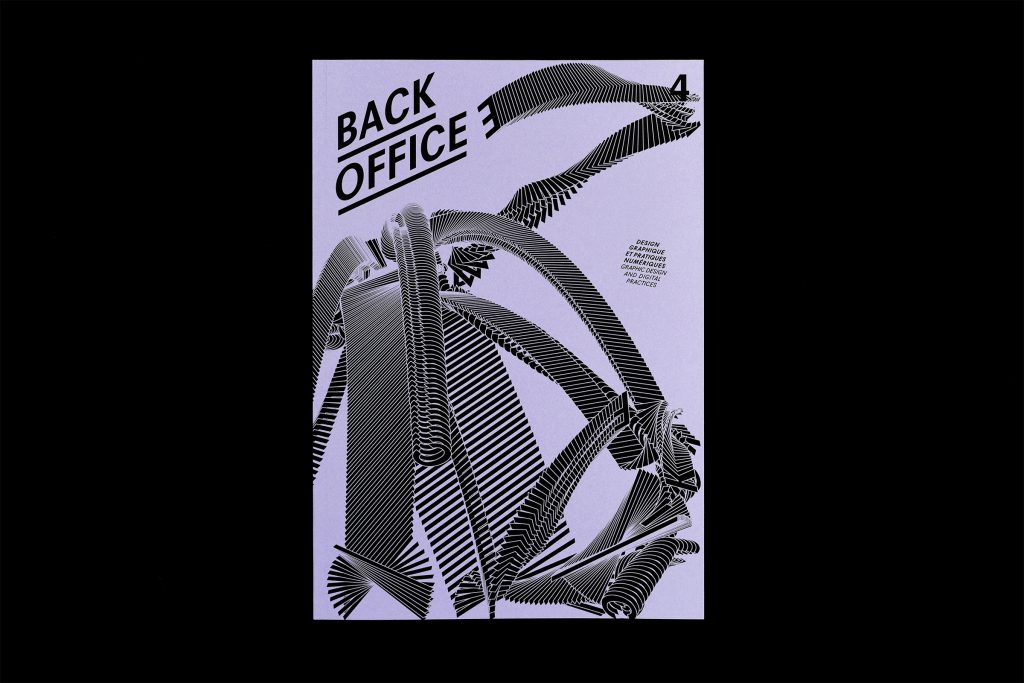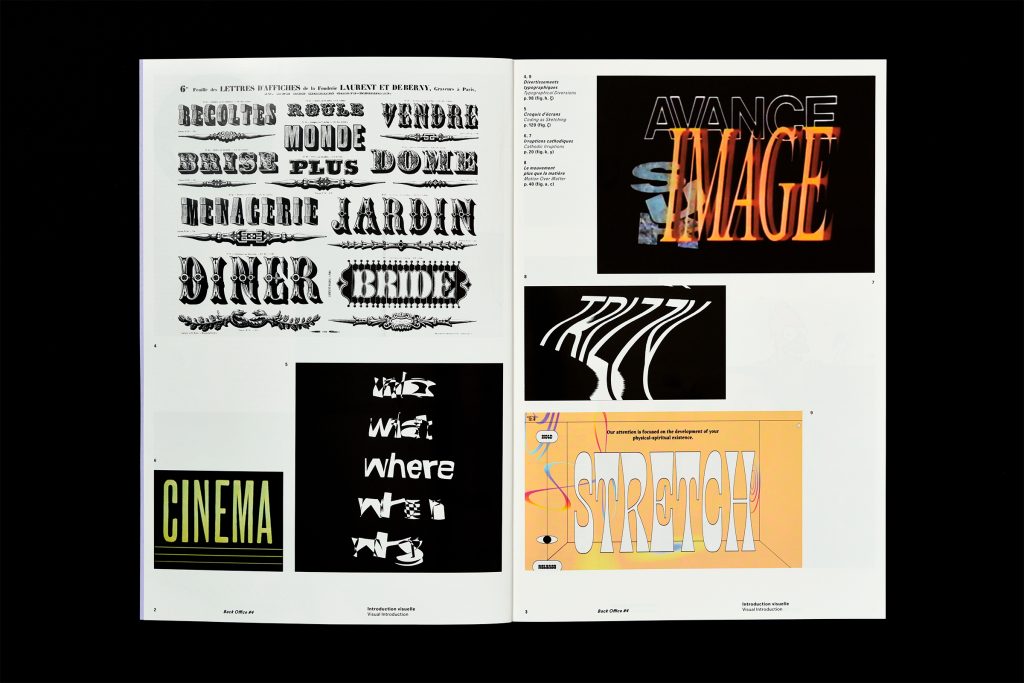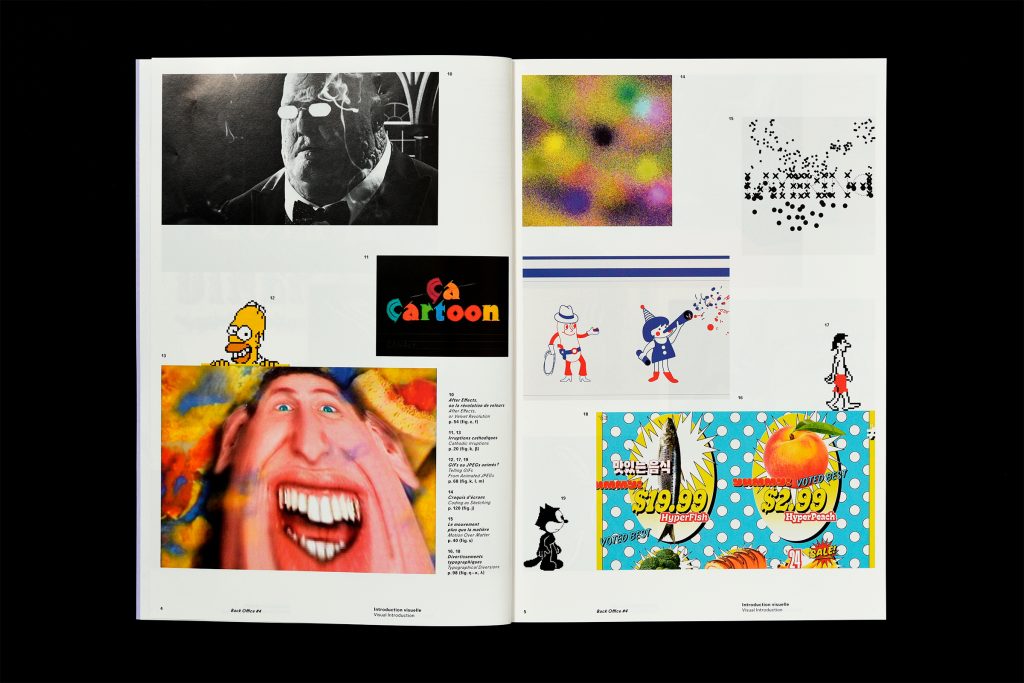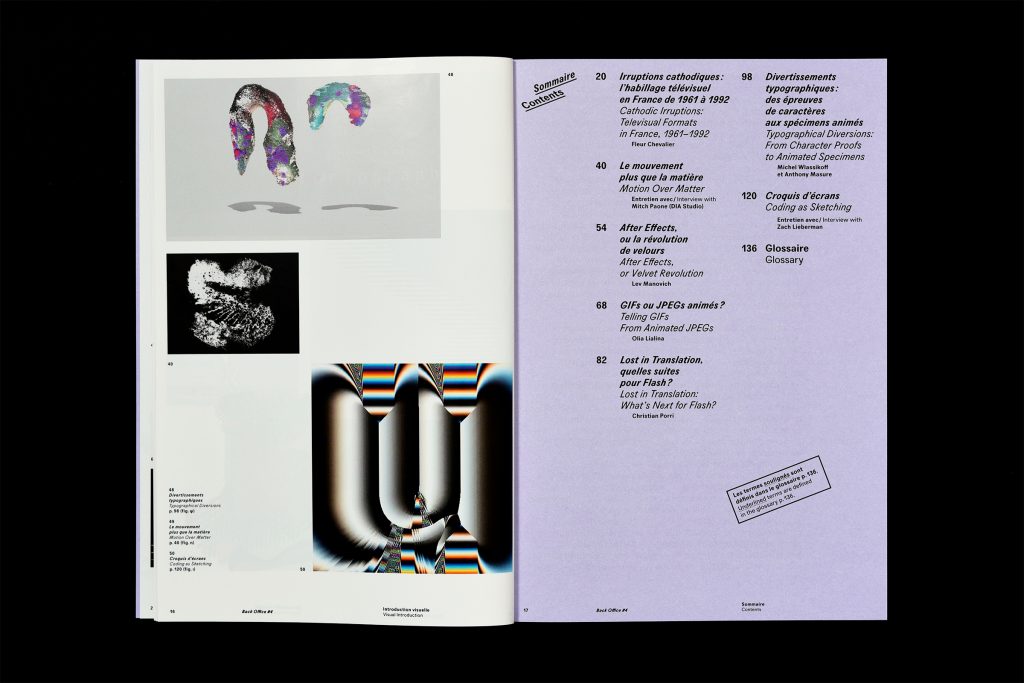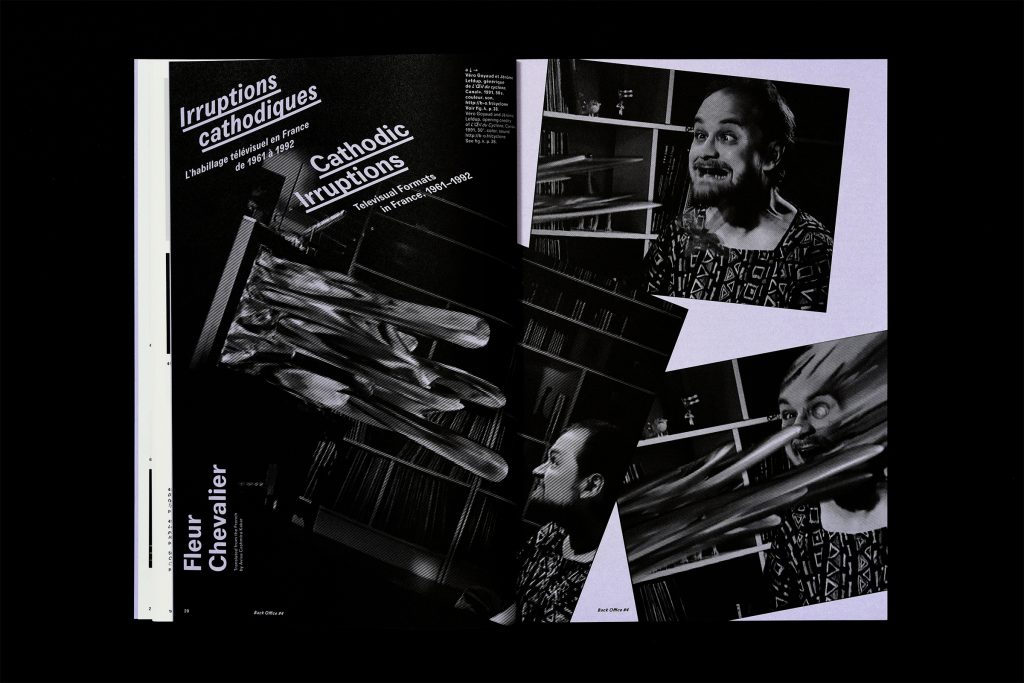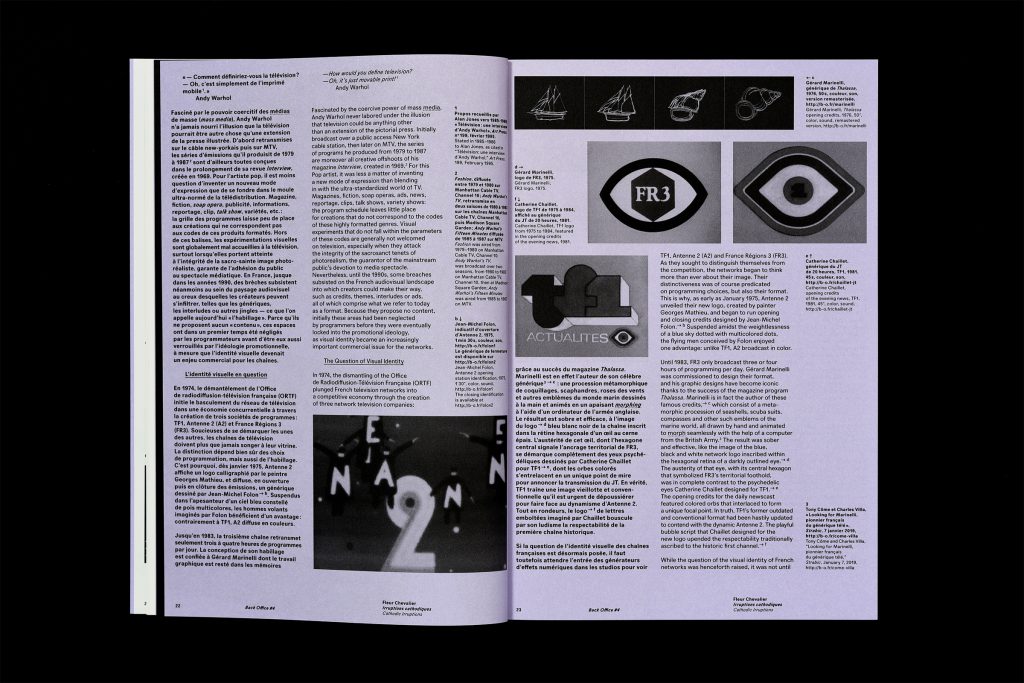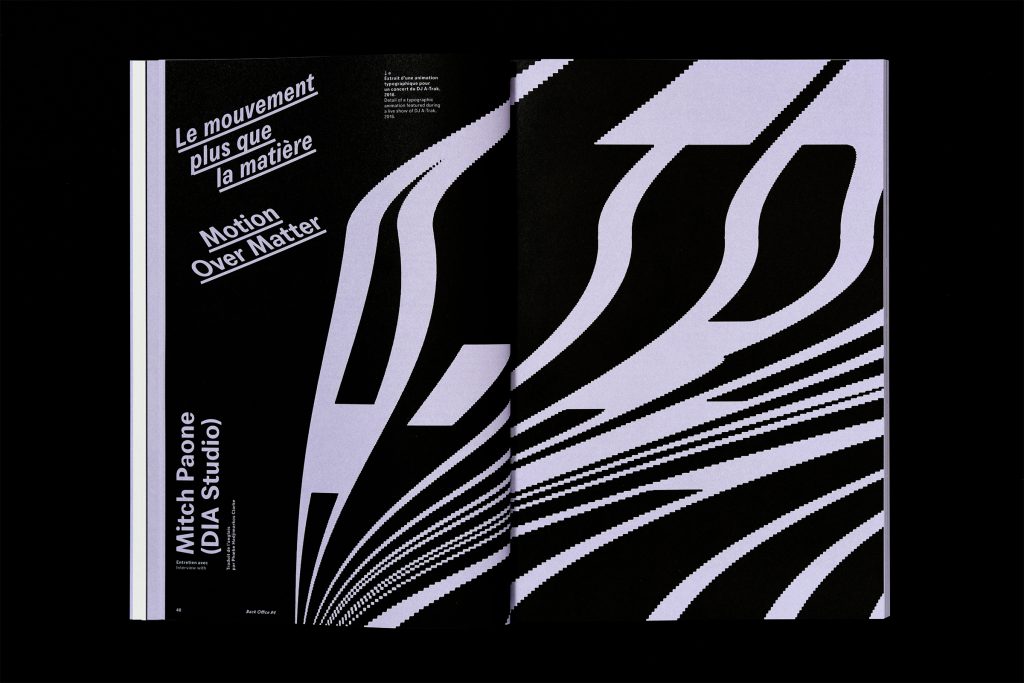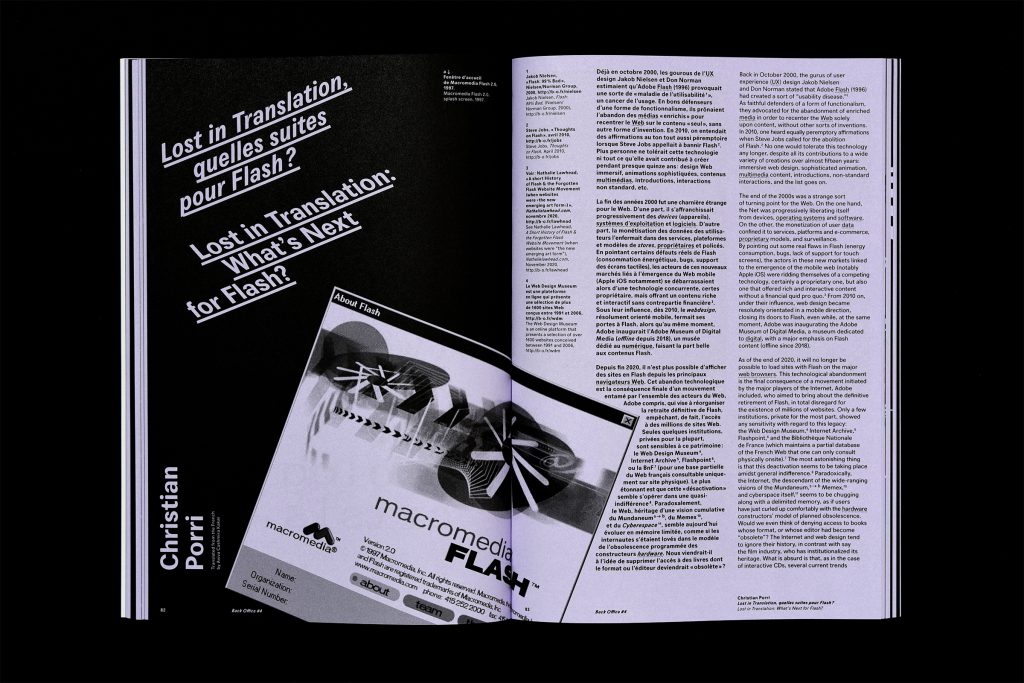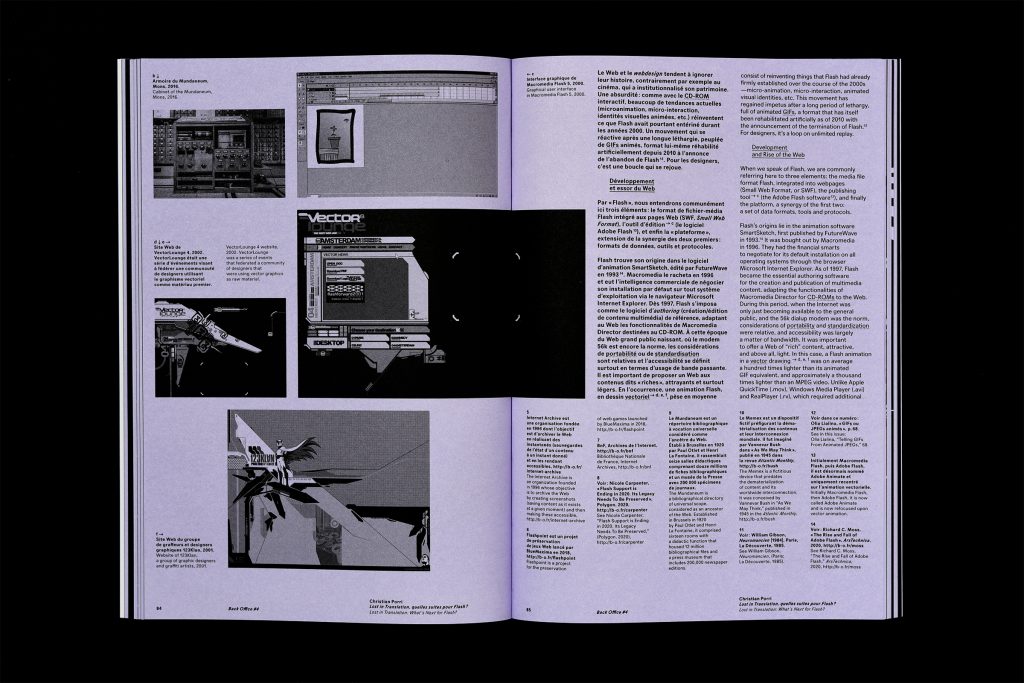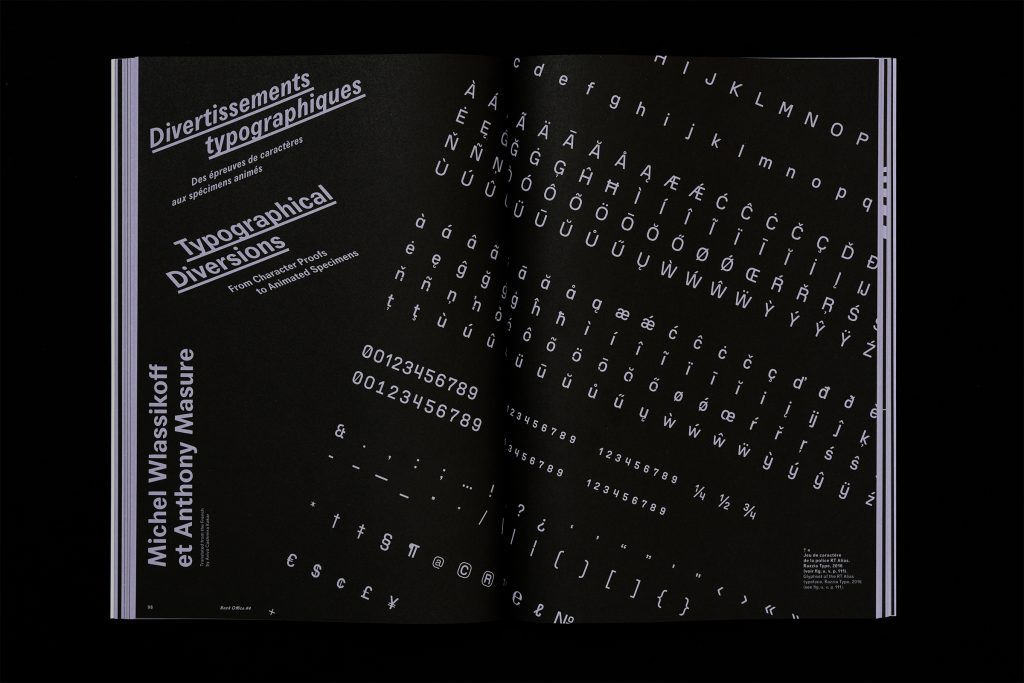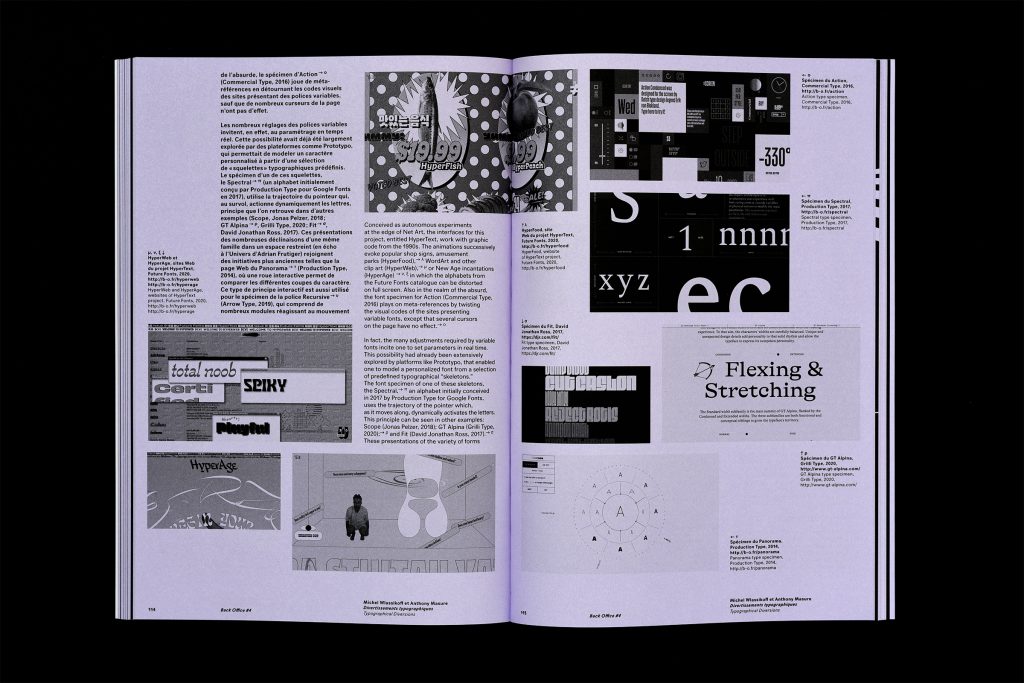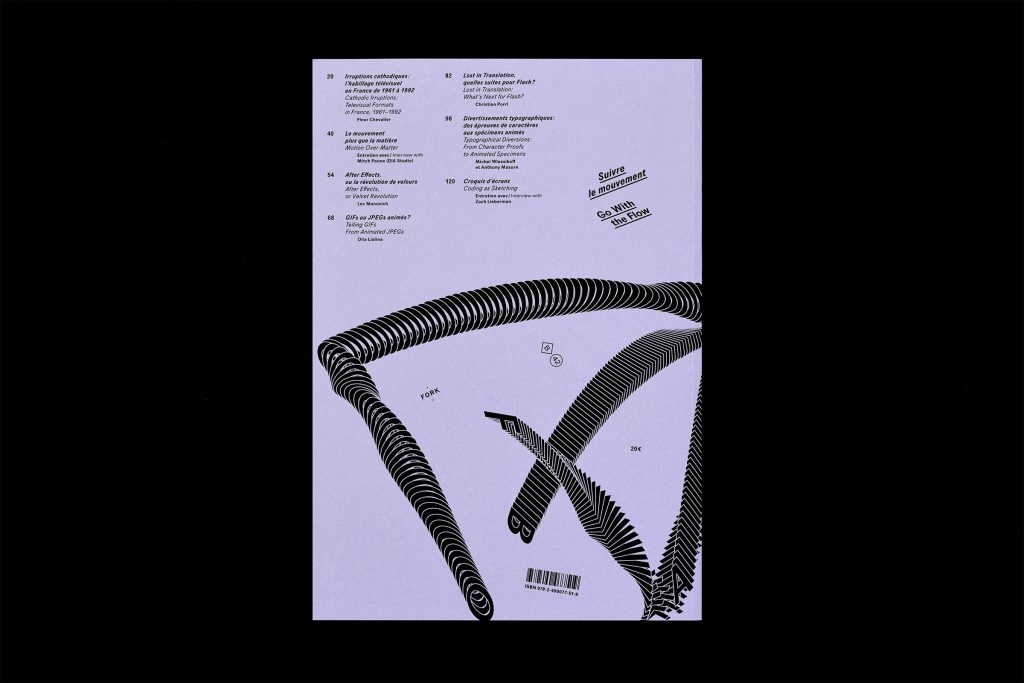BACK OFFICE N°4
GRAPHIC DESIGN AND DIGITAL PRACTICES
B42-151
publication April 2021
language English, French
designer E + K – Élise Gay & Kévin Donnot
size 195 x 280mm
pages 144 p.
ISBN 9782490077519
themes graphic design, typography
Co-published with Fork Éditions
Published with the support of Cnap – Centre national des arts plastiques.
Back Office is an annual review which encompasses graphic design and digital activities. It explores the creative processes at work in the fields of contemporary media and digital practices. By dealing with themes such as the code/form relation, the challenges of creative tools, and the permeable nature of media, it is a unique French-speaking space for reflection and a worldwide vehicle of visibility for the French-speaking community. Back Office is entirely bilingual and is designed as an interface for the reception of the overwhelmingly English-speaking digital culture, through commissioned articles by foreign authors and original translations.
This fourth issue is devoted to the idea of movement in digital practices. The movement progressively becomes an obligatory step for graphic designers, both for its efficiency and as a bit of a trending fad. “Going with the flow” thus becomes a paradoxical directive. Breaking with tradition means one runs the risk of being out of step with clients and prevailing tastes and habits, but excessive compliance results in stereotypical productions. Is it reductive to consider that graphic design might be intrinsically and positively “augmented” by this movement? What effect would this animation paradigm have on form? Could animation be perceived in a manner other than as a mere adaptation or adjunct? The ubiquity of screens, in both private (tablets, smartphones, etc.) and public (advertising or informational displays) spaces, means that graphic designers need to diversify their approaches, thus making it necessary to conceive design spaces that are variable and translatable.
CONTENTS
Cathodic Irruptions: Televisual Formats in France, 1961–1992
Fleur Chevalier
A look back at the genesis of television format, a space initially neglected by programmers, before it got invested by artists and got finally definitively taken over by the promotional ideology supporting the channels’ visual identities. This article proposes a chronological analysis of the constitution of the television image in France through figures, technologies, economy, etc.
Motion Over Matter
Interview with Mitch Paone
Interview with the co-founder of DIA studio, a New York based agency specialized in kinetic identities (visual identities in motion). This article offers a personal reading of the links between music, rhythm, text and animation through a series of examples and highlights of the career of its founder, from film titles to television productions through type design.
After Effects, or Velvet Revolution
Lev Manovich
This article proposes an analysis of the new visual language of advertising production, music videos and TV channel format that emerged between 1993 and 1998. The author demonstrates how the technical evolutions and functionalities of the After Effect software have shaped what is nowadays called motion design, a formal grammar whose main specificity is to be found its hybridity.
Telling GIFs From Animated JPEGs
Olia Lialina
While animated GIF has been invading the Web since the mid-1990s, its use has evolved from the primitive decorative clipart to the “meme” viral use of contemporary networks. This article proposes an epistemological analysis of this ambiguous format, between still and animated images, associating raster, transparency, color palette and sequencing.
Lost in Translation: What’s Next for Flash?
Christian Porri
Based on the history of Flash software that revolutionized visual and interactive creation, video games and video on the Web in the 2000s, Christian Porri analyzes the disappearance of Flash by comparing it to other cultural media. It combines a post-mortem selection of twenty notable Flash sites, as the frozen museum of a lost cyberspace.
Typographical Diversions: From Character Proofs to Animated Specimens
Michel Wlassikoff and Anthony Masure
The type specimen constitutes a kind of publication apart, between promotional document and graphic expression. This article proposes to analyze its contemporean embodiement, experimental demonstration websites, in terms of ancient typographic history.
Coding as Sketching
Interview with Zach Lieberman
Zach Lieberman’s practice is at the junction between programmed visual experimentation, commercial control and teaching. In direct line with John Maeda, his predecessor at the MIT Media Lab, he promotes an alternative approach to the creation of moving images that is both algorithmic and sensitive.
